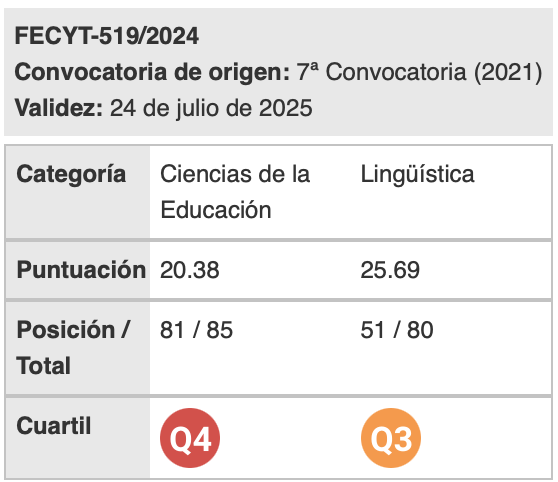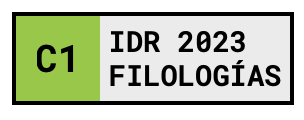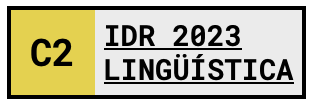Multimodality in English for specific purposes: Reconceptualizing meaning-making practices
Keywords:
English for Specific Purposes, Multimodal Pedagogy, Meaning-making Skills, New LiteraciesAbstract
The rapid evolution from print-based to multimodal information has still not received sufficient attention from the field of English for Specific Purposes (ESP). This paper advocates the need to re-conceptualize ESP through multimodal practice for new opportunities of interactive learner engagement. For the purpose, qualitative, exploratory research was conducted on multimodal ESP practice carried out with post-graduate students at the University of Calabria in Italy. The study addresses the issues of how multimodal environments can affect ESP and how a multimodal assignment can influence learner motivation, engagement and awareness. A theoretical multimodal semiotic approach was combined with multimodal pedagogy to investigate the benefits of learners’ engagement in creating artefacts with content-specific language, as well as developing awareness of their meaning-making processes. A questionnaire survey revealed learners’ active involvement determined by intrinsic, extrinsic and achievement motivation of working in a multimodal environment. Learner artefacts showed their ability to produce content-specific language in specialized contexts of use and to creatively combine the linguistic elements with other semiotic resources. In their explanations of meaning-making processes, learners further manifested their awareness of how multimodality can stimulate motivation in learning, foster critical thinking and decision-making skills, enhance natural and flexible language learning, as well as the use of prior specialized knowledge in switching between linguistic and other semiotic modes. The study suggests that ESP development can benefit more from a multimodal pedagogy which is grounded in the principles of learner-centredness, constructivist learning and social interaction compared to the traditional instructivist approach.
Downloads
References
Ainsworth, S. (1999). The Functions of Multiple Representations. Computers and Education, 33, 131-152.
Atkins, S. J. (2001). Constructing visual literacy teaching: An investigation of two primary school teachers’ construction of visual literacy teaching. Unpublished honours dissertation. University of Tasmania, Launceston, Australia.
Beichner, R. J. (1994). Multimedia Editing to Promote Science Learning. Journal of Computers in Mathematics and Science Teaching. 13, 147-62.
Bereiter, C. & Scardamalia, M. (1985). Cognitive coping strategies and the problem of inert knowledge. In S. Chipman, J. Segal & R. Glaser (Eds.). Thinking and Learning Skills: Research and Open Questions, vol. 2 (pp. 65-80). Hillsdale, NJ: Erlbaum.
Brooks, J.G. & Brooks, M.G. (1993). In Search of Understanding: The Case for the Constructivist Classroom. Alexandria, VA: Association for Supervision and Curriculum Development.
Bull, G. & Anstey, M. (2010). Evolving pedagogies: Reading and writing in a multimodal world. Carlton, Australia: Education Services Australia Unlimited.
Dudley-Evans, T. & St. John, M. J. (1998). Developments in English for specific purposes: A multi-disciplinary approach. Cambridge: Cambridge University Press.
Gee, J. Paul. (2004). Situated language and learning: A critique of traditional schooling. New York, NY: Routledge.
Good, T.L. & Brophy, J.E. (1994). Looking in classrooms. New York, NY: HarperCollins College Publishers.
Guo, L. (2004). Multimodality in a biological text. In K. O’Halloran (Ed.), Multimodal discourse analysis: Systemic functional perspectives (pp. 196-219). London and New York: Continuum.
Hampel, R. & Hauck M. (2006). Computer-mediated language learning: making meaning in multimodal virtual learning spaces. The JALT CALL Journal, 2(2), 3-18.
Hull, G. & Katz, M.-L. (2006). Crafting an agentive self: Case studies of digital storytelling. Research in the Teaching of English, 41(1), 43-81.
Hull, G. & Nelson, M. E. (2005). Locating the semiotic power of multimodality. Written Communication, 22, 224-261.
Hutchinson, T. & Waters, A. (1987). English for specific purposes. Cambridge: Cambridge University Press.
Jewitt, C. (2005). Multimodality, “reading”, and “writing” for the 21st Century. Discourse: studies in the cultural politics of education, 26(3), 315-331.
Jewitt, C. (2006). Technology, Literacy, Learning: A Multimodal Approach. London and New York: Routledge.
Jewitt, C. (2008). Multimodality and literacy in school classrooms. Review of Research in Education, 32, 241–267.
Jewitt, C., Kress, G., Ogborn, J. & Tsatsarelis, C. (2001). Exploring Learning through Visual, Actional and Linguistic Communication: The Multimodal Environment of a Science Classroom. Educational Review, 53, 5-18.
Kafai, Y. B. & Resnick, M. (eds.). (1996). Constructionism in practice: designing, thinking, and learning in a digital world. Mahwah, NJ: Lawrence Erlbaum.
Karagiorgi, Y. & Symeou, L. (2005). Translating constructivism into instructional design: Potential and limitations. Educational Technology & Society, 8(1), 17-27.
Kimball, J. (1996). What are we doing when we talk science? The Internet TESL Journal, 2(8). <http://iteslj.org/Articles/Kimball-Science.html>. (Accessed 15 November 2012).
Kist, W. (2007). Basement new literacies: Dialogue with a first-year teacher. English Journal, 97(1), 43-48.
Kress, G. (2000a). Multimodality: Challenges to thinking about language. TESOL Quarterly, 34, 337–340.
Kress, G. (2000b). Design and transformation: New theories of meaning. In B. Cope & M. Kalantzis (Eds.), Multiliteracies: Literacy learning and the design of social futures (pp. 153-161). London: Routledge.
Kress, G. (2003). Literacy in the new media age. London: Routledge. Kress, G. (2010). Multimodality: A social semiotic approach to contemporary communication. London: Routledge.
Kress, G., Jewitt, C., Ogborn, J. & Tsatsarelis, C. (2001). Multimodal teaching and learning: The rhetorics of the science classroom. London: Continuum.
Kress, G. & van Leeuwen, T. (1996). Reading images: The grammar of visual design. London: Routledge.
Kress, G. & van Leeuwen, T. (2001). Multimodal discourse: the modes and media of contemporary communication. London: Arnold.
Kumaravadivelu, B. (2006). Understanding language teaching: From method to postmethod. Mahwah, NJ: Lawrence Erlbaum.
Lajoie, S. (ed.). (2000). Computers as cognitive tools. No more walls. Mahwah, NJ:
Lawrence Erlbaum.
Lankshear, C. K. & Knobel, M. (2006). New literacies: Everyday practices and
classroom learning. New York, NY: Open University Press.
Laroy, C. (1995). Pronunciation. Oxford: Oxford University Press.
Lyster, R. (2007). Learning and teaching languages through content. A counterbalanced approach. Amsterdam: John Benjamins.
Marlowe, B. A. & Page, M. L. (2005). Creating and sustaining the constructivist classroom (2nd ed.). Thousand Oaks, CA: Corwin Press.
McHale, T. (2005). Portrait of a digital native: Are digital-age students fundamentally different from the rest of us? Technology & Learning, 26(2), 33.
Moon, J. A. (2004). A handbook of reflective and experiential learning: Theory and practice. New York, NY: RoutledgeFalmer.
Orr, T. (2001). English language education for specific purposes. IEEE Transactions on Professional Communication, 44(3), 207-211.
Prior, P. (2013). Multimodality and ESP Research. In B. Paltridge & S. Starfield (Eds.), The handbook of English for specific purposes (pp. 519-534). Malden, MA: Wiley-Blackwell.
Royce, T. (2002). Multimodality in the TESOL classroom: Exploring visual-verbal synergy. TESOL Quarterly, 36(2), 191–205.
Royce, T.D. & Bowcher, W.L. (eds.). (2007). New directions in the analysis of multimodal discourse. Mahwah, NJ: Lawrence Erlbaum.
Ruschoff, B. & Ritter, M. (2001). Technology-enhanced language learning: Construction of knowledge and template-based learning in the foreign language classroom. CALL Journal, 14(3-4), 219-232.
Selber, S. (2004). Multiliteracies for a digital age. Carbondale: Southern Illinois University Press.
Smith, K. A., Sheppard, S. D., Johnson, D. W. & Johnson, R. T. (2005). Pedagogies of engagement: classroom-based practices. Journal of Engineering Education, 93(1), 87-101.
Spiro, R., Feltovich, P., Jacobsen, M., & Coulson, R. (1992). Knowledge representation content specification, and the development of skill in situation-specific knowledge assembly: Some constructivist issues as they relate to cognitive flexibility theory and hypertext. In T. M. Duffy & D.H. Jonassen (Eds.), Constructivism and the technology of instruction: A conversation (pp. 121-128). Hillsdale, NJ: Lawrence Erlbaum.
Stein, P. (2000). Rethinking resources: Multimodal pedagogies in the ESL classroom. TESOL Quarterly, 34(2), 333-336.
Stein, P. (2004). Representation, rights, and resources: Multimodal pedagogies in the language and literacy classroom. In B. Norton & K. Toohey (Eds.), Critical pedagogies and language learning (pp. 95-115). Cambridge: Cambridge University Press.
Stein, P. (2008a). Multimodal instructional practices. In J. Coiro, M. Knobel, C. Lankshear & D. J. Leu (Eds.). Handbook of Research in New Literacies (pp. 871-898). Mahwah, NJ: Lawrence Erlbaum.
Stein, P. (2008b). Multimodal pedagogies in diverse classrooms. Representations, rights and resources. New York, NY: Taylor & Francis.
Stenglin, M., & Iedema, R. (2001). How to analyse visual images: A guide for TESOL teachers. In A. Burns & C. Coffin (Eds.), Analysing English in a global context (pp. 194-208). London: Routledge.
Thornbury, S., & Slade, D. (2006). Conversation: From description to pedagogy. Cambridge: Cambridge University Press.
van Lier, L. (1996). Interaction in the language curriculum. London and New York: Longman.
von Glasersfeld, E. (1989). Constructivism in education. In T. Husen & N. Postlethwaite (Eds.), International Encyclopedia of Education (pp. 162–163). Oxford: Pergamon.
Wysocki, A. (2004). The multiple media of texts: How onscreen and paper texts incorporate words, images, and other media. In C. Bazerman & P. Prior (Eds.), What writing does and how it does it: An introduction to analyzing texts and textual practices (pp. 123-163). Mahwah, NJ: Lawrence Erlbaum.
Downloads
Published
How to Cite
Issue
Section
License
Authors who publish with this journal agree to the following terms:
- Authors retain copyright and grant the journal right of first publication with the work simultaneously licensed under a Creative Commons Attribution License that allows others to share the work with an acknowledgement of the work's authorship and initial publication in this journal.
- Authors are able to enter into separate, additional contractual arrangements for the non-exclusive distribution of the journal's published version of the work (e.g., post it to an institutional repository or publish it in a book), with an acknowledgement of its initial publication in this journal.
- Authors are permitted and encouraged to post their work online (e.g., in institutional repositories or on their website) prior to and during the submission process, as it can lead to productive exchanges, as well as earlier and greater citation of published work (See The Effect of Open Access).

Revista de Lenguas para fines específicos is licensed under a Creative Commons Reconocimiento-NoComercial-SinObraDerivada 4.0 Internacional License.
























